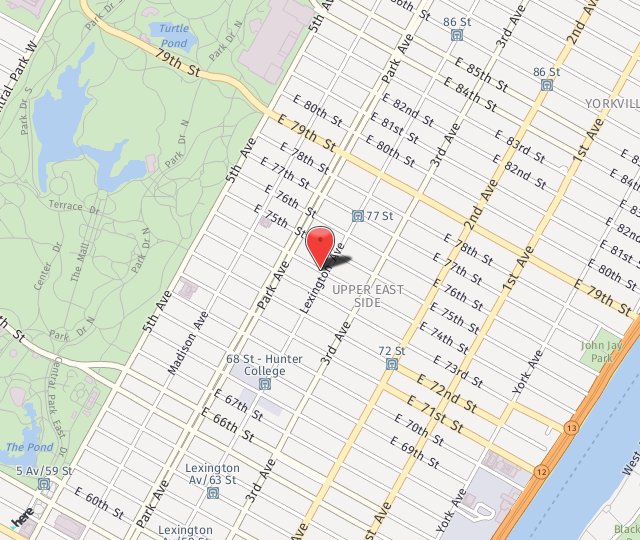Thomas Romo III, MD, FACS is one of the most experienced and respected plastic surgeons for otoplasty and microtia surgery in the world, known for his meticulous minimally invasive surgical techniques and for achieving natural-looking results with a shorter recovery period. As a world-renowned innovator in surgical methods as well as an inventor of new endoscopic instruments for facial surgery, Dr. Romo’s practice draws patients from New York City, across the United States, and internationally for all of their surgical and non-surgical facial cosmetic needs.
To schedule a one-on-one consult with Dr. Romo, be sure to give us a call or click here to send us an email contact form. Dial (212) 256-9338 to reach our NYC office, or (516) 625-7000 to reach our Long Island office.
What Is Otoplasty?
Otoplasty is cosmetic ear surgery that is done to change the look of the ears. It may be performed to correct ears that are too big, are oddly shaped, or stick out. Adults who have always had “big ears” are never too old to consider otoplasty to change the appearance of their ears. For parents who are looking for otoplasty for a child, Dr. Romo also specializes in this type of procedure for pediatric patients.
Some of the most common reasons to undergo otoplasty include the following:
- Prominent ears - Pinning back prominent ears can help to create a more balanced appearance.
- Asymmetry - Correcting the differences in ear shape, size, and position can also help create a more symmetrical.
- Ear Lobe Repair - Restoring the contour of torn ear lobes after trauma injury or stretched piercings.
Benefits Of Otoplasty
Otoplasty offers patients a variety of benefits. In addition to repairing anatomical defects, otoplasty can:
- Improve appearance - Otoplasty addresses a variety of aesthetic concerns, including ear prominence, irregular shape, asymmetry, and disproportionate size.
- Correction of Ear Asymmetry - Some people may have noticeable differences in the shape, size, and position of their ears, which can make them feel self-conscious. Having an otoplasty addresses these issues by gently reshaping or repositioning the ears, ultimately achieving a more symmetrical appearance.
- Repair of Traumatic Injury - Traumatic ear injuries, such as torn ear lobes, affect both the appearance and integrity of your ear. An otoplasty can repair torn ear lobes, restoring the natural contour of the ears.
What Is Microtia?
Microtia is a congenital deformity affecting the outer ear. The ear does not fully develop within the first trimester of pregnancy. A microtia ear is often smaller in size than normal, can have a peanut-shaped appearance, have only a small nub or lobe present, or be completely absent altogether. Microtia can affect one or both ears. Microtia occurs in 1 out of every 7,000 to 8,000 births. Males are affected more often than females. There are approximately 755 million people living today with some form of microtia. Microtia is often associated with reduced hearing or hearing loss.
What Is Ear Reconstruction Surgery?
Ear reconstruction surgery is a cosmetic ear surgery that is performed to change the look of a patient’s external ears, either due to undesirable physical characteristics or a congenital deformity. There are two main types of reconstructive ear surgery: otoplasty and microtia surgery.
Candidates For Ear Surgery
Otoplasty and microtia surgery are now quite common for both men and women who want to enhance their appearance by changing their ear shape and protrusion. Reconstructive ear surgery is usually not advised for children until their ears have finished developing.
Reasons for undergoing ear surgery may include:
- Make the ears less prominent and more natural-looking
- Construct ears for patients who are impacted by the congenital birth defect, microtia
- Improve hearing for patients with microtia and associated atresia (hearing loss)
- Enhance facial appearance and balance
- Help the patient gain confidence and self-esteem in his or her facial appearance
What are My Treatment Options for Otoplasty?
Otoplasty is the general term used to describe most ear surgeries. Your otoplasty procedure will involve the specific techniques that are needed to correct the problems you express during your consultation. Otoplasty may focus on the correction of protrusion using an ear-pinning technique. It may focus on the earlobe to restore symmetry or may seek to enlarge one or both ears to correct microtia. During your consultation with Dr. Romo, you can expect to receive detailed information regarding your proposed otoplasty procedure as well as answers to your questions.
What is the Best Age to Get Ear Surgery?
This may depend on the type of surgery that is needed to create a more cohesive relationship between the ears and the face and head. Procedures that are done to correct congenital anomalies such as protrusion or microtia are usually scheduled in childhood. Ear pinning surgery may be performed as early as age five, provided that the ears have reached full physical development. Microtia surgery is often performed around age six or seven. That said, if you are an adult who didn't get the opportunity to have either of these conditions corrected in childhood, you can still be a good candidate for surgery.
How Young Can an Otoplasty Patient Be?
Otoplasty procedures are sometimes performed as early as age five. This is typically reserved for congenital problems that affect the shape or size of the ears. The early correction of ear deformities is ideal because it significantly reduces the chances that a child will be the target of unwanted comments or even bullying. It also empowers the child to achieve optimal personal development in the area of self-confidence.
What Type of Anesthesia Will Be Used?
The type of anesthesia that is used during ear surgeries may differ based on several factors. Age is the primary factor that is considered when we plan anesthesia. Pediatric procedures are nearly always performed using general anesthesia as this is easier for the patient who may otherwise be quite frightened receiving treatment on their ears. Under general anesthesia, as well, because the child is "asleep," they are completely still. Otoplasty procedures that are performed on adults, and maybe some teens, can be done in the office using a local anesthetic. Injections of local anesthetic completely numb the ear, assuring complete comfort.
Are Otoplasty Results Permanent?
The results of otoplasty are permanent, yes. We anticipate that patients will recover well from their surgeries and enjoy a lifetime of normalcy as it relates to ear shape and size.
Where are the Scars from Ear Surgery and How Noticeable Will They Be?
Scars from ear surgery are very discreet. Though inevitable, scarring typically fades to be barely noticeable over time. It can take up to a year for scars to mature. However, they are usually not noticed even before they mature because incisions are placed in areas like natural creases or behind the ears.
Otoplasty Results
Otoplasty may achieve the following results:
- Changed ear shape and protrusion, allowing for a more natural appearance
- Make one or both ears more proportionate to the size and shape of the head and face
- Pin back the ears
- Reduce the size of the ears or make them more symmetrical
Otoplasty Before And After


Microtia Surgery Results
Microtia surgery may achieve the following results:
- Construct a new ear structure using rib cartilage or porous implants
- Create natural-looking ears on one or both sides of the head
- Implant a bone-anchored hearing aid under the skin, when necessary
Microtia Surgery Before And After


What Does Reconstructive Ear Surgery Involve?
With otoplasty, Dr. Romo designed a unique technique that uses a skin flap behind the ear, which allows for complete exposure of the ear cartilage and a more predictable result when suturing back the cartilage. This procedure avoids a common problem with traditional otoplasty that results in over-pinning, resulting in subsequent flaring of the ears called “telephone deformity.”
During microtia surgery, a new ear or portion of an ear will be fashioned using rib cartilage or porous implants and then attached where the natural ear should be positioned. If the patient’s condition is also associated with hearing loss, a bone-anchored hearing aid can be implanted under the skin during the procedure.
Ear Surgery Procedure Overview
Here’s an overview of what you can expect during otoplasty or microtia surgery:
- The procedure will last from 2‒3 hours, depending on the complexity
- You will be given an anesthetic so you will not feel any pain during the procedure
- Results can be seen immediately
- A light dressing is put in place after the surgery, which usually remains for one day
- After surgery, the patient will be given a ROMO-GUARDTM to protect the new ear(s)
- Recovery and potential downtime can range from 10‒14 days, although adults can usually return to work in about a week
- The surgery is done in the fold of skin behind the ear, so there is no visible scar
Why Choose Dr. Romo For Your Ear Surgery?
Dr. Romo is a pioneer in the field of reconstructive ear surgery, with more than 25 years of experience in performing groundbreaking surgical techniques for many different forms of this procedure, including otoplasty and microtia surgery. He also provides otoplasty for children and microtia surgery for children. Dr. Romo designed and published a unique otoplasty technique, which enables a more predictable result as well as a tension-free closure that prevents deformity in the post-operative ear shape as the ear heals.
Committed to improving the level of comfort and protection provided by a postoperative ear device for his patients, Dr. Romo designed and developed a device called the ROMO-GUARDTM, which he created specifically for ear reconstruction surgeries.
In partnership with the Little Baby Face Foundation, a non-profit organization founded by Dr. Romo, he has provided hundreds of free surgeries to children of low-income families who are born with ear deformities.
The first step in preparing for an otoplasty is your consultation. It is important to consult with one or more experienced top plastic surgeons in New York for ear surgery, specifically those who specialize in minimally invasive ear surgery techniques. During your consultation, be sure to ask any questions you may have and also discuss your concerns and personal preferences.
An otoplasty is usually performed under local or general anesthesia, depending on your preference and the extent of the procedure. An incision is made behind the ear and within the natural creases of the ear to gain access to cartilage. The ear cartilage is reshaped and repositioned to achieve your desired result. The incisions are then closed with sutures, and sterile bandages are applied to protect your ears during the healing process.
While otoplasty is a safe surgical procedure, it does come with its own set of risks and complications. These include the increased risk of infection, bleeding, scarring, asymmetry, and changes in ear sensation. However, the risks can be reduced dramatically by taking the time to find a qualified surgeon to perform the procedure. It is equally important to follow both pre-operative and post-operative instructions and follow up with your surgeon as recommended.
The recovery period after having an otoplasty usually involves minor swelling, discomfort, and bruising of the ear. However, these side effects are normal and usually resolve by themselves in a few weeks after treatment. Patients are always advised to follow all post-op instructions to ensure proper healing and reduce the risk of infection.
Microtia surgery is a generally safe procedure, but similar to otoplasty, there are risks you need to be aware of.
These risks include:
- Scarring
- Skin breakdown
- Damage to the skin grafting site
- Scar contraction
Schedule Your Otoplasty Consultation Today!
If you are interested in learning more about otoplasty, microtia surgery, otoplasty for children or microtia surgery for children, call our office today at 212-288-1500. You can also schedule a consultation with Dr. Romo by filling out our appointment request form. You deserve to look and feel your best, so don’t hesitate to contact us today!

